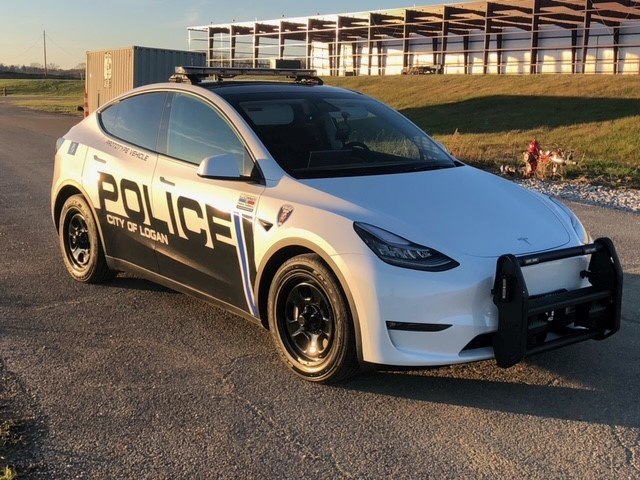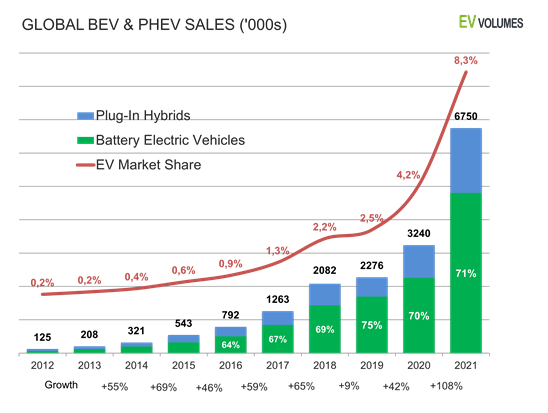Chatting Green with Michael Benson of Command Consulting on Municipal Electric Vehicles
- Chatting Green
-
Mar 11
- Share post

Electric vehicle markets are seeing massive growth, and municipalities are beginning to see the benefits in the form of huge money savings. In this installment of Chatting Green, former fire chief and the Co-Owner of Command Consulting of Wadsworth, OH, Michael Benson, discusses the trends in electric vehicles, and explains why municipalities are lining up to convert their fleets to all electric.
…
As a consultant, you help municipalities save money by adding electric vehicles to their fleets. In a recent article in Police1 you talk in detail about how the city of Logan, Ohio is using a Tesla police car, and how, over time, their cost savings could be in the millions of dollars, if they transition to all electric. Are we witnessing the game being changed?
The game is changing because the automotive market is shifting plus the interest in doing something about climate change is starting to appeal to all political persuasions. A recent bill introduced by Republican State of Ohio Senator Michael Rulli provides incentives for purchasing an electric vehicle (EV), along with other provisions, to help support and grow the automotive industry in Ohio as it changes from internal combustion engine (ICE) power to electric. Ohio residents, businesses, and municipalities are now recognizing the low cost for renewable energy (solar and wind are now the cheapest forms of energy) making them take a look at renewable energy development on their properties.
The economics of EV’s and clean energy are finally forcing the climate skeptics to take positive action to save the planet by trying to save themselves money. There are very few opportunities to do a good thing and simultaneously save money. The combination of EV’s in a municipal fleet with renewable energy microgrids improves service and saves taxpayer dollars at the same time. That is a powerful combination, and this change in the game is irreversible at this point.
…
ARTICLE: The economic advantages of electric vehicles
…

What trends are you seeing in EV markets that give you optimism that municipalities will switch to all electric fleets sooner rather than later?
The first trend is the commitments from every major auto manufacturer to go electric. The legacy auto manufacturers have all committed to electrifying their vehicle offerings by a certain date. The work to accomplish those goals is difficult, and will take time and monetary investments to make happen. With all of them on board now, there is no turning back. One driving factor for these commitments has been regulation by cities, states and countries around the world reducing and prohibiting ICE vehicles in the coming decades.
The next trend is the technological advance and consequential reduction in costs for batteries and electric drive trains. Battery chemistries and designs are coming to the market with greater efficiencies, higher power and better safety. Dry cell and solid state batteries are promising longer ranges with less weight and lower costs. Additionally, increasing battery production will also lower costs as volumes increase.
A third trend is the automotive market mentioned above. The only growth in automotive sales is from the electric sector, and this growth is exponential. In the last decade the percentage of electric vehicles has gone from 0.2%, and it is now nearing 10%. Automotive buyers are now looking at EV’s with curiosity instead of derision. Here is a chart from EV-volumes.com for reference:

In another article you touch on myths and skepticism facing electric municipal vehicles, like issues with range, price, maintenance, and durability. Is skepticism still a large barrier to progress for EVs, or are the data and market trends now becoming too difficult to ignore?
These barriers still exist in people’s minds, but this will change as they see more and more EV’s on the road and in their neighbor’s driveways. There has been a concerted effort by industries with deep pockets and a vested interest against EV’s to make people skeptical of electric vehicles. They have been spreading disinformation and misinformation for years to create fear, uncertainty and doubt (FUD) about electric vehicles. One recent item is the claim EV batteries will pollute our planet. The truth is batteries can be used in cars, then used as stationary storage, then recycled to be made into new batteries. We do need to ramp up and improve our battery recycling processes, but it is also an opportunity for companies to grow and develop cleaner technologies. There are many others myths from FUD about EV’s which I address in that article.
Most environmentally conscious people follow the emergence of EVs are excited about the potential for keeping carbon out of the atmosphere, and thus combatting the climate crisis. You have cited data that says just one EV can save 10,000 pounds of carbon in one year. But you’ve also said you generally don’t discuss climate or environmental impact with municipalities. Why is that?
I focus on economics, because saving money is appealing no matter what the listener’s politics or ideology are. In other words, I can obtain buy-in for electric vehicles and renewable energy from politicians from either side of the aisle by focusing on the economics. When I find a politician who also wants to fight climate change, adding up the greenhouse gas reductions (CO2 specifically) is also important to them. If I start with the climate crisis I lose half of my audience; if I stick to economics everyone is interested.
…
ARTICLE: Debunking the top 10 electric vehicle myths in law enforcement
…
What advice would you give to someone who is trying to impress the urgency of the climate crisis, but might be facing denial, skepticism or pushback?
First, listen to what they have to say. Then have a discussion on what you have learned on that topic without telling them they are wrong. This is a difficult process, and I oversimplified it here. I recommend reading Katherine Hayhoe’s book, “Saving Us: A climate scientist’s case for hope and healing in a divided world.” She also has a website: http://www.katharinehayhoe.com/
Before you started Command Consulting you were a fire chief. How did you become so interested and educated in EVs and microgrids?
As I neared the end of my fire service career I reserved a Tesla Model 3 to replace my Fire Chief’s car. I had to wait 25 months for it to arrive, so I spent that time learning everything I could about electric vehicles. I realized an EV is powerful enough to work as a police car, and larger battery packs will allow us to electrify ambulances and fire trucks. Then I started to think about how we would charge a fire engine with a 400-500 kWh battery pack. Microgrids are the answer, so I took classes from Stanford on Energy Innovation and Emerging Technologies. Since then I read, research and watch videos daily on topics related to EV and microgrids, and I attend conferences and network with professionals in this space.
I feel like I am part of a revolution in municipal vehicle fleets similar to when we moved away from horse-drawn wagons to automotive fire engines in the early 20th century. In addition the development of microgrids has benefits well beyond EV charging by providing resiliency, improving our electric grid and cleaning up how we produce electricity in our communities.
If Super Bowl commercials are any indication, the EV market is exploding, and here to stay. What should we watch for in the coming months and years as the EV market evolves?
Once you start to pay attention, you will notice EV’s and renewable energy are now big business. JP Morgan Chase has allocated more than a trillion dollars to invest in green technology and development, and they don’t invest in things which don’t make money. Going green is good for the planet and for an investor’s bottom line. GM is building a huge battery plant in Lordstown, Ohio and Ford is building one in Michigan.
Otherwise, when you are ready for a new car, look at an EV option first. Typically, an EV sells itself after you test drive it and feel the performance only an EV can have. In the next few years, the price for an EV will also be lower than an ICE-powered car eliminating that barrier. There are dozens of new models hitting the market in the next year, and Chinese-made EV’s are going to hit our shores with an effect similar to Japanese automakers in the 1970’s. This is going to be a very interesting decade for the automotive industry.
